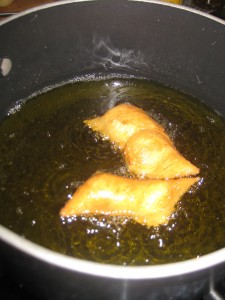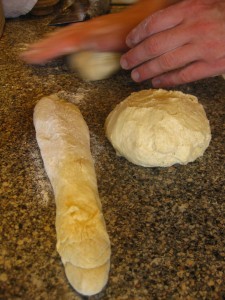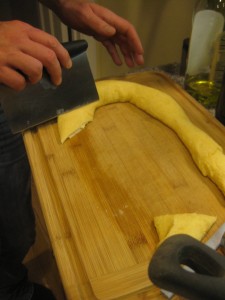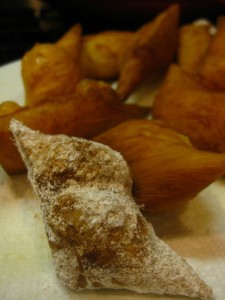 If you read our last Grub Match, you will have noticed repeated references to one Vincent Drake. Vince just might be the best cook I know (after my mom, obviously). He definitely embraces a holistic definition of “gastronome” like none of my other friends. He seems almost as focused on the proper process of making a dish as he is on the actual end result. He actually uses a jigger to measure liquor. I haven’t seen anyone do that since my grandfather died.
If you read our last Grub Match, you will have noticed repeated references to one Vincent Drake. Vince just might be the best cook I know (after my mom, obviously). He definitely embraces a holistic definition of “gastronome” like none of my other friends. He seems almost as focused on the proper process of making a dish as he is on the actual end result. He actually uses a jigger to measure liquor. I haven’t seen anyone do that since my grandfather died.
Though Vince also happens to be one of the kindest people I know, he did not hesitate in his secret bid to steal the Grub Match crown for himself by replacing PitchKnives’ typical bar-based final debate with a mega brunch. That brunch included brioche French toast, and he ended up, after making four loaves, with enough leftover dough for probably two more. Enter: beignets.
Brioche is a viennoiseries, the French term for baked goods that use choux pastry dough, dough that is yeast-based but that includes extra butter, eggs, etc. Beignets are viennoiseries as well, and V simply decided to reclassify the brioche choux pastry as beignet choux pastry and go to town.
 First, he rolled the dough out into a snake shape about two inches in diameter. He then left it to rise on its own, schoo
First, he rolled the dough out into a snake shape about two inches in diameter. He then left it to rise on its own, schoo ling me in the meantime in a game, Fallout 3, in which I could run around post-Apocalyptic D.C. killing Super Mutant Brutes with an assault rifle. After a bit of desensitizing violence, we returned to the dough and found it had puffed up suitably.
ling me in the meantime in a game, Fallout 3, in which I could run around post-Apocalyptic D.C. killing Super Mutant Brutes with an assault rifle. After a bit of desensitizing violence, we returned to the dough and found it had puffed up suitably.
Dude then went to town with his bench  scraper like it was a sword and he was Inigo Montoya. You see, whereas I simply chop things in the kitchen, taking only perfunctory care with, for instance, equality of size in the resulting pieces, Vince is careful and precise. He executes twists of the wrist that you only notice if you’re paying attention. It’s pretty awesome.
scraper like it was a sword and he was Inigo Montoya. You see, whereas I simply chop things in the kitchen, taking only perfunctory care with, for instance, equality of size in the resulting pieces, Vince is careful and precise. He executes twists of the wrist that you only notice if you’re paying attention. It’s pretty awesome.
And then, after making those equally-sized, awesome cuts of dough, we dropped them in olive oil. The high moisture content in the choux dough turns to steam and puffs out the dough into beautiful golden, bite-sized pieces shaped like pillows. 375 degrees is the appropriate temperature, and V tested it with his thermometer, ultimately determining that a temperature fluctuating around 400 was acceptable.
Then onto a paper napkin on a plate, sprinkled with a little powdered sugar, and into our  bellies. V’s beignets did have a distinct olive oil taste, which I wasn’t expecting, and made me wonder what more neutral oil places like Café du Monde or the zeppole stand at the San Giorno festival use.
bellies. V’s beignets did have a distinct olive oil taste, which I wasn’t expecting, and made me wonder what more neutral oil places like Café du Monde or the zeppole stand at the San Giorno festival use.
Man, nothing beat fresh fried dough. Most cultures have their version, and I pity those that don’t. Wikipedia tells me that our American form, popular courtesy of New Orleans, comes, obviously, from France, but originally from Ancient Roman Gaul. They didn’t footnote this, so I’m trusting their word for it.

